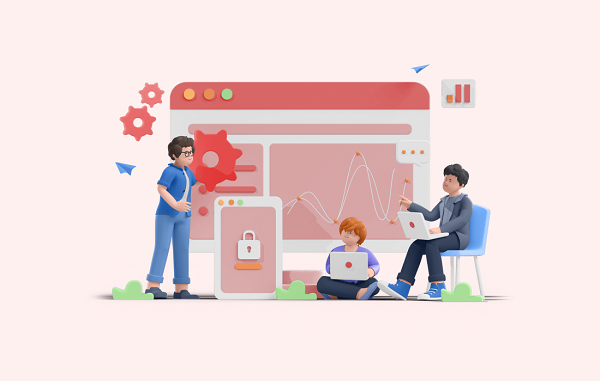Exploring the Tech Terrain: A Guide to Choosing Software in 2024
In today’s tech-driven world, software stands as the cornerstone of our digital interactions, spanning operating systems, cybersecurity tools and productivity applications. The process of selecting the optimal software is fundamental, influencing our digital efficiency and our cybersecurity posture. Opting for the best-fit software entails a strategic approach, aligning with our specific needs to ensure a seamless and secure tech experience. As technology advances, navigating the ever-changing tech landscape necessitates vigilance and adaptability to capitalize on emerging opportunities and mitigate evolving risks.
Table of Contents
Deciphering Operating Systems and Their Impact
Operating systems (OS) serve as the nerve center of any computing device, orchestrating hardware and software resources to deliver a user-friendly interface. The choice of an OS significantly shapes one’s tech experience, impacting software compatibility and overall performance; widely used systems like Windows, macOS and various Linux distributions offer distinct features, aesthetics and user experiences. A user-friendly OS simplifies daily tasks and boosts productivity by providing a stable platform for software applications. In this context, recognized providers such as Keytive offer a diverse array of software solutions, empowering users with cutting-edge tools to streamline tasks across different tech environments.
Choosing an operating system goes beyond personal preference; it entails selecting a platform that caters to specific needs. For tech enthusiasts, certain operating systems might provide robust support for programming languages and development environments while gamers prioritize compatibility with gaming software and hardware. In enterprise settings, the decision often balances user-friendliness, security features and administrative control; thus, evaluating factors like ecosystem, software availability, hardware compatibility and community support is critical before committing to an OS. A well-informed decision at this foundational level can greatly optimize the integration between workflow habits and tech utilization.
The Role of Cybersecurity Software in Digital Defense
In an era dominated by cyber threats, cybersecurity software serves as a frontline defense mechanism for safeguarding digital assets; these programs detect and neutralize malicious software, offering real-time protection against an array of cyber threats, including malware, phishing and ransomware. Regular updates confirm cybersecurity software remains equipped to counter new threats, providing assurance in the dynamic domain of cybersecurity. In today’s hyper-connected landscape, where devices are constantly linked to the internet, the significance of cybersecurity software extends beyond individual devices to encompass entire networks.
Effective solutions often encompass network firewalls, intrusion detection systems and privacy controls to deliver comprehensive digital defense. Moreover, advanced software leverages heuristic analysis and machine learning to preempt and combat emerging threats. As cyber adversaries grow increasingly sophisticated, recognizing cybersecurity software as an indispensable component of every tech setup is paramount for mitigating evolving digital risks. In an age where data breaches and cyber attacks are becoming increasingly prevalent, the importance of integrating robust cybersecurity software into every facet of digital infrastructure cannot be overstated.
Productivity Suites: Empowering Collaboration and Efficiency
The evolution of productivity suites from standalone applications to cloud-based platforms has revolutionized how we work; modern productivity suites offer a plethora of tools for document creation, data analysis and collaborative work, enabling seamless teamwork and information sharing. These suites cater to the needs of remote teams and digital nomads, featuring functionalities like real-time collaboration, cloud storage and cross-device compatibility. This transformation has enhanced productivity while cultivating a more connected and flexible work culture, enabling users to collaborate effectively from any location.
The accessibility of advanced productivity suites has democratized professional tools, making sophisticated features accessible to a wider audience. These suites often come with mobile applications, empowering users to access and edit documents in shorter timespans; additionally, integration with cloud services ensures automatic backups and synchronization across devices, safeguarding data against loss. Furthermore, the expansion of template libraries within these suites streamlines document creation, saving time and elevating the quality of work produced.
Related Post: Top software to create app without coding
Navigating the Maze of Software Choices
With a plethora of software options available, making informed choices can be daunting; whether for personal, educational or business use, finding high-quality software at reasonable prices requires a strategic approach. Looking beyond initial costs to assess features, usability, and support is essential. Seasonal deals and bundled offerings can yield substantial savings, while educational discounts provide cost-effective solutions for students and educators. Leveraging tools and resources comparing software features and pricing can aid in making well-informed decisions, ensuring optimal value without compromising quality.
In the expansive terrain of software choices, scalability is a critical consideration. As businesses expand and projects evolve, software that can scale with growing demands ensures long-term viability. This involves evaluating the software’s capacity to accommodate additional users, handle larger datasets and integrate with other applications seamlessly. Confirming that chosen software can adapt to technological advancements and evolving user requirements can preempt future disruptions and avoid additional costs associated with software migration or upgrades. Ultimately, it is imperative to weigh the long-term implications of software choices to ensure sustained effectiveness well into the future.
The Importance of Software Updates
Keeping software up-to-date is paramount for maintaining the security and functionality of tech environments. software updates often include patches for vulnerabilities discovered since the last release; neglecting these updates can leave systems vulnerable to exploitation. Additionally, updated software can offer enhanced performance and compatibility with other applications, introducing new features and improvements that enhance user experience and productivity.
By staying abreast of software updates, individuals and organizations can leverage these enhancements to streamline workflows and optimize their tech operations. Furthermore, regular updates help address compatibility issues with evolving hardware and software, ensuring smooth functionality across diverse devices and platforms. Thus, efficiently managing software updates through automated mechanisms or continual access to the latest versions ensures a safe and efficient tech ecosystem.
Conclusion
In conclusion, the tech landscape is in a constant state of flux, mirrored by the array of software choices available; whether selecting an operating system, cybersecurity software or productivity suite, making informed decisions is paramount. Regular software updates are essential for maintaining security and functionality; by thoughtfully selecting and managing software, individuals and organizations can navigate the tech realm confidently, ensuring a seamless, secure and efficient computing experience. As technology advances, maintaining adaptability and vigilance will remain integral in harnessing the full potential of digital tools for personal and professional pursuits.
Follow Us On:
